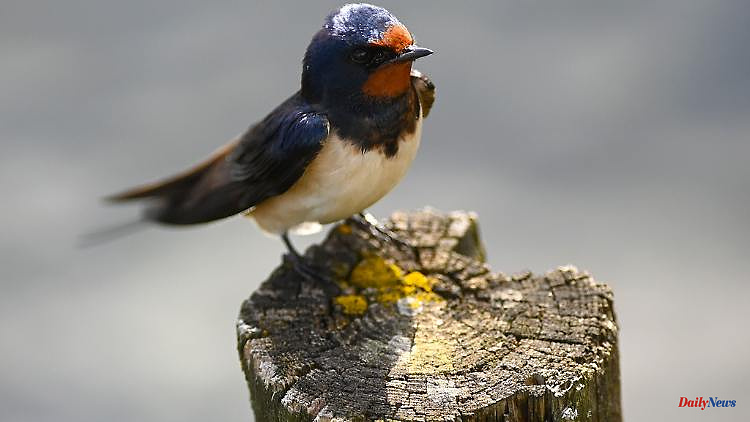Those who live side by side with swallows are recognized by conservationists. In Thuringia, 2000 such plaques have already been awarded - an attempt to stop the loss of birds in the state.
Jena (dpa/th) - In the campaign "Swallows welcome!" of the Nature Conservation Union (Nabu) in Thuringia, 31 people have already applied for an award this year. Every year since 2011, the Nabu has been awarding plaques to people and communities in Thuringia who tolerate swallow's nests on their houses and thus help to stabilize the bird population in the Free State. In Thuringia, 2000 such badges have already been awarded. Among other things, to rescue stations, agricultural cooperatives, companies and communities, but also private homes.
Swallows are migratory birds. The first returnees have already started building nests in Thuringia or have moved into their old ones. At the start of the season at the beginning of May, the Nabu awarded the rescue station of the German Red Cross (DRK) in Gotha the first badge of the year as a swallow-friendly house.
"We have already counted more than 25 nests under the roof of the building," says swallow officer Tino Sauer. "One of the largest house martin colonies in Gotha has established itself here." The birds were hardly disturbed by the bustle of the rescue workers with their vehicles. "Otherwise things don't look good in the city area," Sauer sums up. Beyond that, the Nabu was only aware of a larger colony at Gotha Zoo. Once upon a time there was also a colony on Hermann-Haack-Strasse.
Bird experts have been warning of a decline in barn swallows and house martins for years. In Thuringia, too, the population of swallows is continuously declining. Therefore, from the point of view of the Nabu, every nesting site is important for the small birds. Barn swallows prefer to build their bowl-shaped clay nests inside stables, open sheds, garages or carports. House martins like to place their closed nests on rough exterior facades of buildings, balconies or bridges.
According to the animal rights activists, intensive agriculture, progressive sealing of the soil, wanton removal of nests or renovation work that is unfriendly to swallows make life difficult for them. The consequences are a lack of suitable nest-building material, a lack of nesting sites and an insufficient supply of food. Without active protective measures, the negative trend for swallows cannot be stopped.












